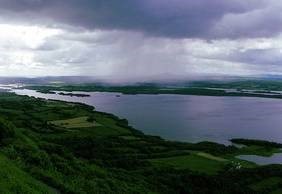Trout Fishing in Northern Ireland
By law, game licences are required for all game fishing rods to be used by any person over the age of 12 within the DAERA area. Depending on fishery rules, permits may also be necessary. By law, game licences are required for all game fishing rods to be used by any person over the age of 12 within the DAERA area.
Depending on fishery rules, permits may also be necessary. A “Public Angling Estate of Fisheries” is provided to local anglers and tourists by Northern Ireland’s Government upon payment of a minor permit fee. Such permits may be obtained at www.nidirect.gov.uk/angling. Private fisheries’ permits can be purchased as day tickets and so on at nominated outlets or on site.


 The only large body of limestone water in Northern Ireland, Lough Erne, Enniskillen, Co. Fermanagh is a unique and highly productive lough offering some of Europe’s best trout angling. During the 2nd or 3rd week of May, the lough has an abundant mayfly hatch, making this the most productive time for fly fishing.
The only large body of limestone water in Northern Ireland, Lough Erne, Enniskillen, Co. Fermanagh is a unique and highly productive lough offering some of Europe’s best trout angling. During the 2nd or 3rd week of May, the lough has an abundant mayfly hatch, making this the most productive time for fly fishing. The 38-mile-long Lower Bann has four major tributaries, the Agivey, Ballymoney, Clady and Macosquin rivers – every one of which offers ideal habitat for trout. Entering Lough Neagh just a mile or so from the Lower Bann entrance, the Moyola river can, for angling purposes, also be considered as a part of the Lower Bann’s catchment area.
The 38-mile-long Lower Bann has four major tributaries, the Agivey, Ballymoney, Clady and Macosquin rivers – every one of which offers ideal habitat for trout. Entering Lough Neagh just a mile or so from the Lower Bann entrance, the Moyola river can, for angling purposes, also be considered as a part of the Lower Bann’s catchment area.